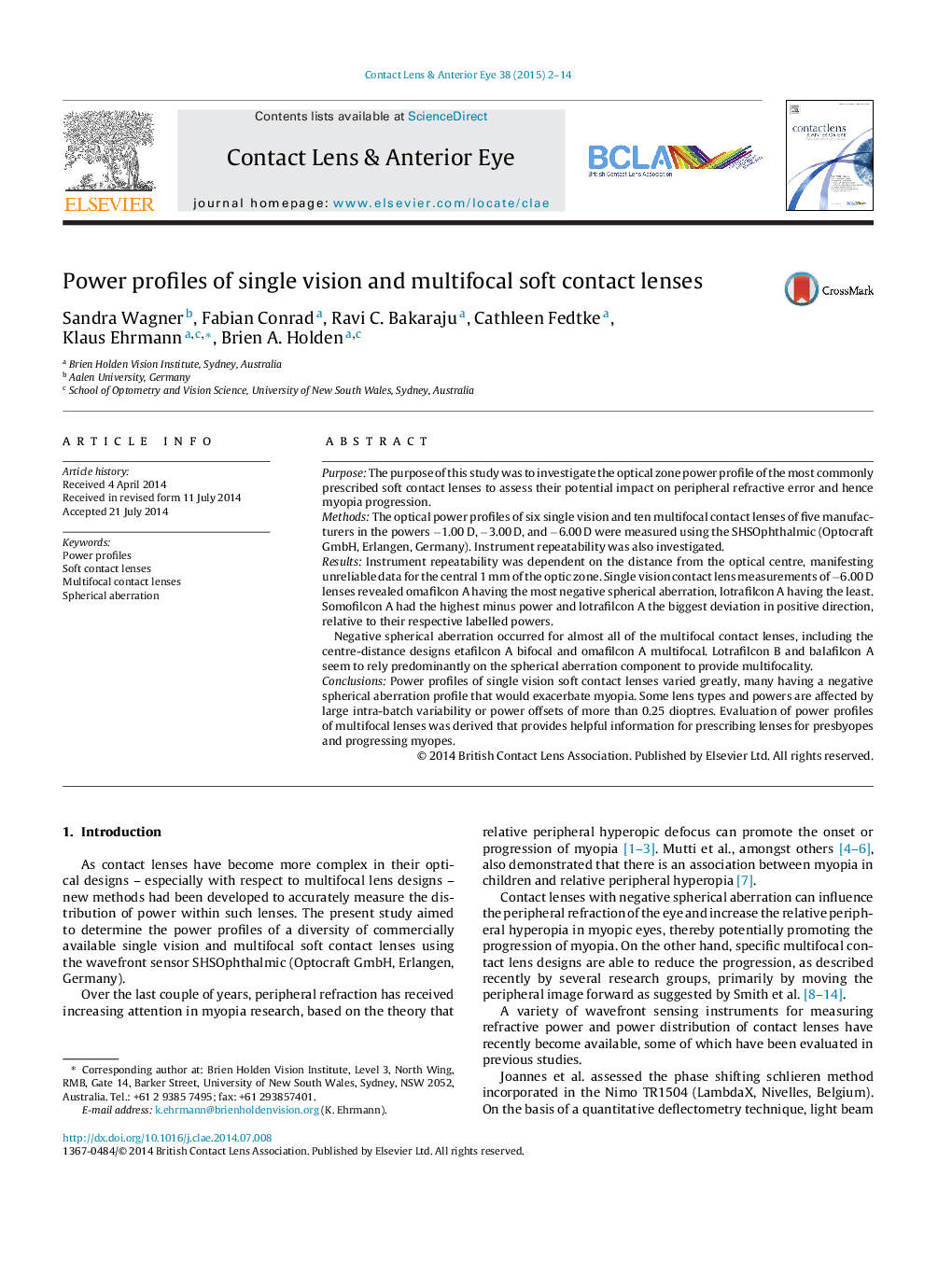| Article ID | Journal | Published Year | Pages | File Type |
|---|---|---|---|---|
| 2692997 | Contact Lens and Anterior Eye | 2015 | 13 Pages |
•Power profiles of 16 single vision and multifocal soft contact lenses were measured.•Repeatability of the SHSOphthalmic power-mapping instrument was found to be variable.•Multifocal power profiles vary significantly between lens types.•Negative spherical aberration found in most lens types increases the risk of myopia progression.
PurposeThe purpose of this study was to investigate the optical zone power profile of the most commonly prescribed soft contact lenses to assess their potential impact on peripheral refractive error and hence myopia progression.MethodsThe optical power profiles of six single vision and ten multifocal contact lenses of five manufacturers in the powers −1.00 D, −3.00 D, and −6.00 D were measured using the SHSOphthalmic (Optocraft GmbH, Erlangen, Germany). Instrument repeatability was also investigated.ResultsInstrument repeatability was dependent on the distance from the optical centre, manifesting unreliable data for the central 1 mm of the optic zone. Single vision contact lens measurements of −6.00 D lenses revealed omafilcon A having the most negative spherical aberration, lotrafilcon A having the least. Somofilcon A had the highest minus power and lotrafilcon A the biggest deviation in positive direction, relative to their respective labelled powers.Negative spherical aberration occurred for almost all of the multifocal contact lenses, including the centre-distance designs etafilcon A bifocal and omafilcon A multifocal. Lotrafilcon B and balafilcon A seem to rely predominantly on the spherical aberration component to provide multifocality.ConclusionsPower profiles of single vision soft contact lenses varied greatly, many having a negative spherical aberration profile that would exacerbate myopia. Some lens types and powers are affected by large intra-batch variability or power offsets of more than 0.25 dioptres. Evaluation of power profiles of multifocal lenses was derived that provides helpful information for prescribing lenses for presbyopes and progressing myopes.
